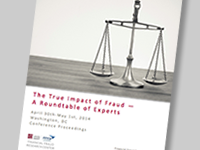In an age of unprecedented longevity, a focus on lifelong individual financial security has never been more crucial. The Financial Security Center brings a unique interdisciplinary perspective to financial security issues facing our society by rethinking the perceived problems around an aging population, especially retirement planning and the need to work longer.
By understanding the role that research, education and policy can play in solving these issues and looking at the problems from multiple perspectives, we will drive the dialogue forward in order to facilitate a healthier state of long-term financial security for the individual and society.
2013-14 PROJECTS
FINANCIAL CAPABILITY AND LITERACY
THE NEXT EVOLUTION IN DEFINED CONTRIBUTION RETIREMENT PLAN DESIGN: A GUIDE FOR DC PLAN SPONSORS TO IMPLEMENTING RETIREMENT INCOME PROGRAMS
 The Stanford Center on Longevity recently released a paper titled The Next Evolution in Defined Contribution Retirement Plan Design: A Guide for DC Plan Sponsors to Implementing Retirement Income Programs. Steve Vernon, Consulting Research Scholar at the Center, collaborated with Dr. Wade Pfau at The American College and the Society of Actuaries to prepare the research and write the paper.
The Stanford Center on Longevity recently released a paper titled The Next Evolution in Defined Contribution Retirement Plan Design: A Guide for DC Plan Sponsors to Implementing Retirement Income Programs. Steve Vernon, Consulting Research Scholar at the Center, collaborated with Dr. Wade Pfau at The American College and the Society of Actuaries to prepare the research and write the paper.
This guide is intended to inform employers, plan sponsors and their advisors on the key issues with implementing retirement income programs in defined contribution (DC) plans, and help plan sponsors carry out their due diligence when considering such a program. It describes various retirement income generators, demonstrates that the different retirement income generators produce significantly different amounts of retirement income at and during retirement, and contains checklists for plan sponsors to follow when implementing a retirement income program. Read the paper. >
BUILDING BEST PRACTICES IN RETIREMENT INCOME
 The Stanford Center on Longevity convened a conference in May 2014 to explore best practices in delivering retirement income through employer-sponsored retirement plans.
The Stanford Center on Longevity convened a conference in May 2014 to explore best practices in delivering retirement income through employer-sponsored retirement plans.
The purpose was to gather a small group of academics, employers, and industry leaders to discuss important issues regarding retirement income solutions in defined contribution retirement plans, come to consensus about areas of agreement and disagreement, and identify topics for future research and analysis. Read the proceedings. >
SAFE HARBOR REGULATIONS FOR RETIREMENT INCOME SOLUTIONS IN DC PLANS
 Lack of regulatory guidance creates uncertainty and confusion for DC plan sponsors, and is viewed as a significant barrier for employers to implement retirement income programs that could improve the retirement security of millions of American workers. This paper will utilize prior SCL research on retirement income to demonstrate how the IRS and Department of Labor can structure safe harbor regulations for retirement income programs in DC plans. The paper will be distributed to industry groups, think tanks, academic experts, and key policymakers at the IRS and DOL.
Lack of regulatory guidance creates uncertainty and confusion for DC plan sponsors, and is viewed as a significant barrier for employers to implement retirement income programs that could improve the retirement security of millions of American workers. This paper will utilize prior SCL research on retirement income to demonstrate how the IRS and Department of Labor can structure safe harbor regulations for retirement income programs in DC plans. The paper will be distributed to industry groups, think tanks, academic experts, and key policymakers at the IRS and DOL.
FINANCIAL REALITIES OF OLDER AMERICANS
 The goal of this project is to develop a comprehensive briefing on the financial characteristics and challenges of older Americans. We are particularly interested in understanding age-related difference in income sources, spending patterns, and net worth. The report, being completed by Adele Hayutin and Jonathan Streeter, analyzes key challenges to the financial well-being of our aging population and synthesizes key data and analysis into a single reference document. The resulting compendium of charts and analysis will be a companion piece to our 2010 report “New Realities of an Older America,” and our 2013 report, “The Aging U.S. Workforce.”
The goal of this project is to develop a comprehensive briefing on the financial characteristics and challenges of older Americans. We are particularly interested in understanding age-related difference in income sources, spending patterns, and net worth. The report, being completed by Adele Hayutin and Jonathan Streeter, analyzes key challenges to the financial well-being of our aging population and synthesizes key data and analysis into a single reference document. The resulting compendium of charts and analysis will be a companion piece to our 2010 report “New Realities of an Older America,” and our 2013 report, “The Aging U.S. Workforce.”
 ADAPTING TO AN AGING WORKFORCE – NEW YORK, 2014
ADAPTING TO AN AGING WORKFORCE – NEW YORK, 2014
To continue the conversation from the first conference on the aging workforce in April 2013, the Center partnered with Mercer to host a second “Adapting to an Aging Workforce” conference in New York. Attendees included numerous employers from large and mid-size companies, as well as academics who study work and aging, and non-profit representatives who think about public policy responses to these issues. The goal of the conference was to address the issues of human capital management and retirement and health planning that employers are facing as they adapt to an aging workforce. Read the proceedings. >
SURVEY GAME – “SAVE THE USS/USA”
 With Jane Hickie’s departure from the Center, responsibility for the game has been shifted to the Financial Security Division. Following discussions with healthcare policy experts in Washington, we determined that the game could be improved significantly by clarifying the underlying metaphor through artwork changes, narrowing the scope of the game to focus more tightly on healthcare policy options, and de-emphasizing the broader national budget. Professors Jay Bhattacharya and Kate Bundorf of the Stanford Center on Health Policy are building on the work of the game by surveying 1,000 to 1,500 voters to compare a traditional survey to the survey game. Completion of the study is expected in fall 2014.
With Jane Hickie’s departure from the Center, responsibility for the game has been shifted to the Financial Security Division. Following discussions with healthcare policy experts in Washington, we determined that the game could be improved significantly by clarifying the underlying metaphor through artwork changes, narrowing the scope of the game to focus more tightly on healthcare policy options, and de-emphasizing the broader national budget. Professors Jay Bhattacharya and Kate Bundorf of the Stanford Center on Health Policy are building on the work of the game by surveying 1,000 to 1,500 voters to compare a traditional survey to the survey game. Completion of the study is expected in fall 2014.
BEHAVIORAL FINANCE RESEARCH
“BEHAVIORAL FINANCE: THE NEXT FRONTIER IN RETIREMENT PLAN DESIGN”
 This paper, underway at the Center and intended for completion in Fall, 2014, is intended to help employers and institutions develop effective behavior change and decision-making programs for their employees and customers by:
This paper, underway at the Center and intended for completion in Fall, 2014, is intended to help employers and institutions develop effective behavior change and decision-making programs for their employees and customers by:
- proposing a four-stage model of positive behavioral engineering that integrates the latest research from behavioral economics;
- identifying the relevant psychological biases that impact this kind of decision making and determine the key behavioral strategies to deploy at each stage; and
- suggesting future research directions that will improve the effectiveness of intervention programs through partnerships between academia and the private sector.
The Center’s model will be applicable to various financial decision-making processes including saving for retirement, deciding when to retire, developing a strategy to use savings to generate retirement income and deciding when to claim Social Security.
BEHAVIORAL FINANCE RESEARCH PROJECTS IN THE WORKPLACE
 The Center is collaborating with Stanford researchers to develop several projects for testing behavioral finance interventions with employees who are making actual decisions on retirement saving and decision-making. Much of behavioral finance research has been conducted in labs, not in workforce settings, and we want to test the findings from this research in real-world settings. The Center is currently seeking funding for the research and employers who will host the research.
The Center is collaborating with Stanford researchers to develop several projects for testing behavioral finance interventions with employees who are making actual decisions on retirement saving and decision-making. Much of behavioral finance research has been conducted in labs, not in workforce settings, and we want to test the findings from this research in real-world settings. The Center is currently seeking funding for the research and employers who will host the research.
FINANCIAL FRAUD RESEARCH CENTER (FFRC)
The work of the FFRC has continued with the support of the FINRA Foundation.
THE TRUE IMPACT OF FRAUD: A ROUNDTABLE OF EXPERTS – WASHINGTON, DC (2014)
 The Financial Fraud Research Center, a joint project of the Stanford Center on Longevity and the FINRA Investor Education Foundation, convened a group of expert researchers and practitioners in the spring of 2014 to discuss the true impact and cost of financial fraud. Read the proceedings. >
The Financial Fraud Research Center, a joint project of the Stanford Center on Longevity and the FINRA Investor Education Foundation, convened a group of expert researchers and practitioners in the spring of 2014 to discuss the true impact and cost of financial fraud. Read the proceedings. >
THE SCOPE OF THE PROBLEM: AN OVERVIEW OF FRAUD PREVALENCE MEASUREMENT
 The Center issued a white paper in December 2013 that reviewed the traditional methods of measuring fraud and their associated challenges. Current estimates of fraud prevalence vary widely, making it difficult for law enforcement, researchers, and policymakers to appreciate the true scope of the problem. This report aimed to reconcile the variability of fraud prevalence estimates, to explain why it is so difficult to obtain reliable and valid estimates, and to suggest ways to improve fraud prevalence measurement. Read the report. >
The Center issued a white paper in December 2013 that reviewed the traditional methods of measuring fraud and their associated challenges. Current estimates of fraud prevalence vary widely, making it difficult for law enforcement, researchers, and policymakers to appreciate the true scope of the problem. This report aimed to reconcile the variability of fraud prevalence estimates, to explain why it is so difficult to obtain reliable and valid estimates, and to suggest ways to improve fraud prevalence measurement. Read the report. >
FRAUD SURVEY PROJECT
 In keeping with the theme of fraud measurement, the Center initiated a survey research project that assesses whether, and to what extent, modifications to survey design and context will affect self-reported rates of individual fraud victimization. The surveys were conducted by Applied Research & Consulting in early December 2013. Initial analysis shows that participants who complete a survey with a “crime” context report significantly less victimization that those who complete a survey with either a neutral or a “consumer purchasing” context. Interestingly, the inhibitory effect of the crime context is stronger for adults over age 65 than it is for younger adults. The Center is currently writing an issue brief for a general audience (anticipated release, October 2014) and an academic paper to be presented at the annual meetings of the Gerontological Society of America in November 2014.
In keeping with the theme of fraud measurement, the Center initiated a survey research project that assesses whether, and to what extent, modifications to survey design and context will affect self-reported rates of individual fraud victimization. The surveys were conducted by Applied Research & Consulting in early December 2013. Initial analysis shows that participants who complete a survey with a “crime” context report significantly less victimization that those who complete a survey with either a neutral or a “consumer purchasing” context. Interestingly, the inhibitory effect of the crime context is stronger for adults over age 65 than it is for younger adults. The Center is currently writing an issue brief for a general audience (anticipated release, October 2014) and an academic paper to be presented at the annual meetings of the Gerontological Society of America in November 2014.
WORLD ECONOMIC FORUM
 The Center has been involved in two related initiatives being led by the World Economic Forum, focused on social protection systems and has been invited to join a newly formed Global Agenda Council: The Future of Insurance and Asset Management.
The Center has been involved in two related initiatives being led by the World Economic Forum, focused on social protection systems and has been invited to join a newly formed Global Agenda Council: The Future of Insurance and Asset Management.
GLOBAL AGENDA COUNCIL: SUSTAINABLE SOCIAL SECURITY SYSTEMS
 After a year as chair, Michele Burns transitioned to a role as co-chair in summer 2013. In her previous year as chair, Michele led the committee to develop a framework for sustainable social security systems that is applicable to both developing and developed nations. (In this context, social security systems are interpreted broadly and include government-sponsored programs, employer-sponsored retirement plans, individual savings, and family and community support.) To expand on the framework, the members of the committee wrote explanatory articles about the various elements, which the Center then edited and compiled into a compendium, entitled “A Framework for Sustainable Social Security System.” The compendium will be distributed in the New Year with editing credit given to the Center. Read the report. >
After a year as chair, Michele Burns transitioned to a role as co-chair in summer 2013. In her previous year as chair, Michele led the committee to develop a framework for sustainable social security systems that is applicable to both developing and developed nations. (In this context, social security systems are interpreted broadly and include government-sponsored programs, employer-sponsored retirement plans, individual savings, and family and community support.) To expand on the framework, the members of the committee wrote explanatory articles about the various elements, which the Center then edited and compiled into a compendium, entitled “A Framework for Sustainable Social Security System.” The compendium will be distributed in the New Year with editing credit given to the Center. Read the report. >
FINANCIAL SERVICE TEAM: DEVELOPING FUTURE SOCIAL PROTECTION SYSTEMS
 Martha Deevy continued her participation on the committee that focuses on the sustainability of worldwide protection systems. This year the committee sponsored a series of workshops focusing on several questions including; what are the criteria to define a retiree’s well-being, financial illiteracy and the failure of financial education programs, and how can financial services industries cooperate with each other and with the government to improve retiree well-being. The Center’s recently published chart book, “The Aging U.S. Workforce, A Chartbook of Demographic Shifts,” was circulated as pre-reading for all three workshops. Martha Deevy was asked to present at and facilitate the workshop held in New York in October. October 2013.
Martha Deevy continued her participation on the committee that focuses on the sustainability of worldwide protection systems. This year the committee sponsored a series of workshops focusing on several questions including; what are the criteria to define a retiree’s well-being, financial illiteracy and the failure of financial education programs, and how can financial services industries cooperate with each other and with the government to improve retiree well-being. The Center’s recently published chart book, “The Aging U.S. Workforce, A Chartbook of Demographic Shifts,” was circulated as pre-reading for all three workshops. Martha Deevy was asked to present at and facilitate the workshop held in New York in October. October 2013.